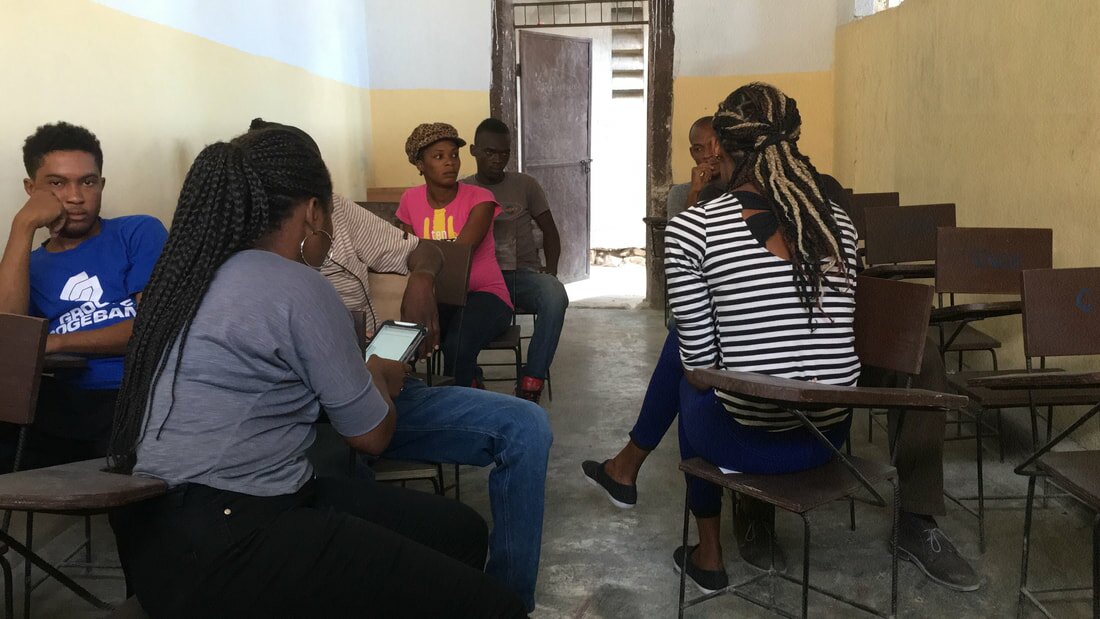|
By: Travis J. Lybbert and Oscar Barriga Cabanillas
Introducing mobile money-based Digital Financial Service (DFS) products to the unbanked working poor raises a host of challenges. These challenges – once understood – would seem daunting and discouraging if they weren’t outweighed by the staggering potential of DFS as a gateway to more productive financial management and broader improvements in livelihoods and well-being. In a new project in Haiti, we are tracking the launch of a new mobile platform that will grant access to small, short-term digital loans known as nano-loans. Our objective is to better understand both the barriers to uptake and usage of DFS and their potential benefits to the working poor. Digicel-Haiti has designed nano-loans to operate on their Mon Cash mobile money platform. These small 30-day loans ranging from $2 to $20 are disbursed and repaid via Mon Cash. Nano-loans are the first major DFS product in a pipeline of other products planned for the future and are therefore positioned to serve as a gateway to financial inclusion, and improved financial management among households that are currently unbanked. Given this lead-out position, however, the stakes are high: subsequent access to and benefits from DFS hinges on the success of this initial nano-loan product. A Foundation for Digital Loans in Haiti We conducted an exploratory study to better understand the likely nano-loan clients. In July 2017, we convened a series of 10 Focus Group Discussions (FGDs) and mini-surveys that targeted potential nano-loan clients. Since initial diffusion of DFS is unlikely to penetrate isolated rural areas without Mon Cash agents, we restricted these FGDs to urban and semi-urban areas around Port-au-Prince and the Artibonite valley. Digicel-Haiti has offered top-up advances to their customers for the past few years. These advances, called KrediPam and accessible through the Digicel phone menu, are effectively hyper-nano loans (average size of $0.33) in the form of pre-paid phone credit to be repaid a day or two later. Given their top-up habits and liquidity constraints, KrediPam is familiar to many Digicel-Haiti customers. Nano-loans will likely target many of the same customers, so this familiarity provided a useful point of departure for the FGDs, which aimed to recruit Digicel customers from working poor neighborhoods with some familiarity with Mon Cash. Typical Nano-loan Consumers Those who participated in our FGDs tend to be food insecure: over half worry about food and frequently reduce meals or portions in response. Most were self-employed with some access to informal credit sources, including family and friends (especially popular with women) and informal pawnbrokers (especially popular with men). These were treated largely as stop-gap credit for food, transportation or school fee expenses. Crucially, financial literacy among participants was on average fairly limited. The concept of nano-loans was appealing to many of our participants who anticipated tapping such a credit source regularly as an alternative to covering stop-gap expenses in a pinch. They quickly understood that the effective collateral for such loans was their continued use of their Digicel phone number. Many would do just about anything to keep the number given it is a critical link to their social world. Potential Nano-Loan Challenges The FGDs revealed several potential concerns and challenges that require careful, ongoing attention. Two stand out: 1. Financial literacy is low among the target population. To serve as a gateway to financial inclusion, nano-loans must attract those with little or no experience with formal financial services. Financial restraint and fiscal discipline in the face of what might be perceived as easy money develops only slowly for some. 2. Target clientele – many of whom are self-employed or day laborers – are vulnerable to high daily and weekly income volatility. This presents a particular challenge to the success of nano-loans when fixed repayment dates are strictly enforced. Since their informal alternatives often have some built-in flexibility, this rigidity was alarming to many of our FGD participants What’s Next? These focus group discussions and short interviews provided a glimpse into the potential usage and demand for a nano-loan product among unbanked and low-income Haitians. Once the product rolls out in the spring of 2018, we’ll continue to work with Digicel to understand the impacts of nano-loans on users’ consumption patterns, short-term food security, and debt. Travis Lybbert has conducted research in applied microeconomics in Haiti, Africa and India for 15 years. He has designed and conducted rigorous evaluations of many interventions in many locations with for-profit, non-profit and government partners. In Haiti, Travis has worked in the agriculture and microfinance sectors, including extensive work with the emerging MonCash mobile money platform and with various partners, including Digicel-Haiti. Oscar Barriga-Cabanillas is pursuing his PhD in Agricultural and Resource Economics at UC Davis. He traveled to Haiti in Summer 2017 to conduct focus group discussions for the DCO-funded pilot study “Nano-Loans and CDR-Based Credit Scores: A Gateway to Financial Inclusion for Unbanked Haitians?”. Photo Credit: Oscar Barriga-Cabanillas
0 Comments
|
DCO BlogAll content is produced by the DCO or contributing researchers. ArchivesFebruary 2018 Categories RSS Feed RSS Feed
|
DIGITAL CREDIT OBSERVATORY


